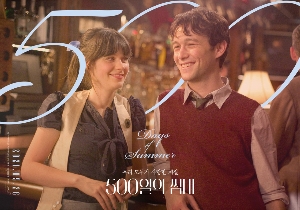
Introduction
The 2010 film 500 Days of Summer, directed by Marc Webb, is a romantic dramedy that captivated audiences with its non-linear storytelling and unique perspective on love. While the film is often analyzed for its narrative structure and cinematography, its sound design plays an equally critical role in shaping the audience’s emotional connection to the story. From its carefully curated soundtrack to its subtle yet effective use of ambient sounds, the film’s audio elements contribute significantly to its success. In this analysis, we will explore the movie from a sound director’s perspective, focusing on its plot, the intricacies of its audio design, and the factors that made it a commercial and critical hit.
1. The Narrative Arc and Audio’s Role in Emotional Engagement
500 Days of Summer tells the story of Tom Hansen (Joseph Gordon-Levitt) and his relationship with Summer Finn (Zooey Deschanel) in a fragmented, non-linear sequence. The film does not follow a conventional romantic structure, which is reflected in its sound design choices.
Throughout the film, music serves as a storytelling device, reinforcing Tom’s emotional highs and lows. For example, The Smiths' song “There Is a Light That Never Goes Out” introduces Summer’s character, instantly establishing a connection between her and Tom through shared musical taste. The shift in audio tonality—bright and orchestral when Tom is happy, muted, and distant when he is heartbroken—helps guide the viewer through his emotional turmoil. The expectations vs. reality scene is a perfect example of this: the cheerful background score on the "expectations" side contrasts with the almost deafening silence on the "reality" side, amplifying the heartbreak.
2. Sound Design: Diegetic and Non-Diegetic Elements
The film’s audio landscape is a blend of diegetic and non-diegetic elements that add layers to its storytelling. Diegetic sounds, such as street noises, office chatter, and even the sound of an elevator ding, root the audience in Tom’s world. The filmmakers used these environmental sounds strategically to create a sense of realism, making Tom’s journey feel more relatable.
Non-diegetic sounds, such as voiceovers and musical scores, enhance the emotional depth of the story. The narrator’s voice adds a literary touch, making the film feel like a memory being recounted, which aligns with its nonlinear structure. Meanwhile, music is used to foreshadow emotional transitions. Regina Spektor’s “Us” sets an almost whimsical yet melancholic tone at the start, hinting at the bittersweet journey ahead. The contrast between silence and grand musical moments ensures that the audience remains emotionally engaged throughout the film.
3. Key Sound-Driven Moments and Their Impact on Success
The sound design of 500 Days of Summer was instrumental in making certain scenes iconic. One standout moment is the “You Make My Dreams” sequence, where Tom experiences a euphoric high after spending the night with Summer. The sound design includes non-diegetic elements, such as a choreographed musical number with exaggerated sound effects, to emphasize his joy. This sequence resonated with audiences because of its lighthearted and fantastical take on love, reinforcing the film’s uniqueness.
Another critical moment is the final meeting between Tom and Summer at the park. The background noise fades into soft, melancholic music, allowing the dialogue to take center stage. This deliberate shift in audio ensures that the weight of Summer’s words—her revelation that she is married—hits Tom and the audience deeply. The restrained sound design prevents over-dramatization, making the scene feel heartbreakingly real.
From a commercial standpoint, the soundtrack played a crucial role in the film’s success. The curated selection of indie and alternative music appealed to a young, music-savvy audience, helping the movie gain a cult following. The film’s ability to use sound to evoke emotions and reinforce themes of love, nostalgia, and heartbreak contributed significantly to its critical and box office success.
Conclusion
500 Days of Summer is not just a film about love and heartbreak; it is an audiovisual experience carefully crafted to mirror the complexities of relationships. From its masterful use of music to its thoughtful sound design choices, every element enhances the film’s emotional impact. The combination of diegetic and non-diegetic sounds, along with a soundtrack that perfectly captures the essence of the story, elevates the film beyond a typical romantic drama. Ultimately, it was this seamless integration of storytelling and sound that made 500 Days of Summer a standout film, leaving a lasting impression on audiences worldwide.